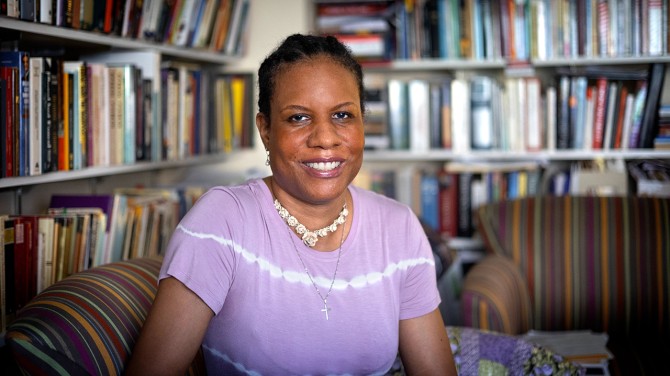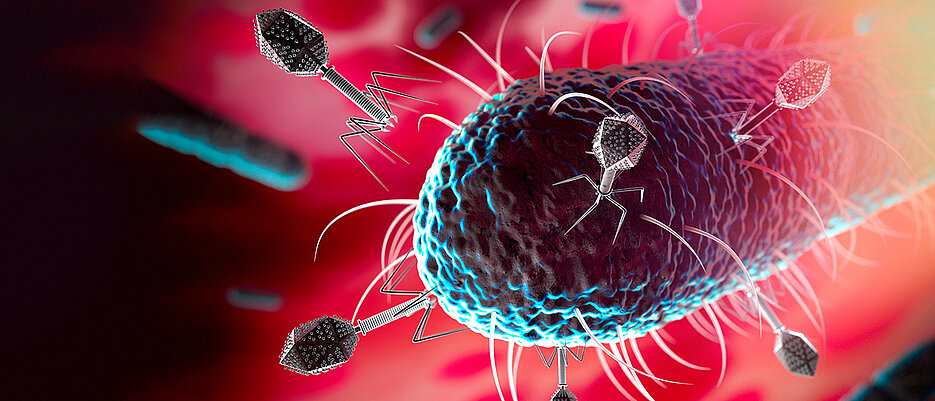The discovery that small organic molecules are excellent catalysts makes Ben List, Director at the Max-Planck-Institut für Kohlenforschung, one of the pioneers of a new research field in chemistry. A portrait of the director at the Max-Planck-Institut für Kohlenforschung and 2021 Nobel laureate in chemistry.
TEXT: CATARINA PIETSCHMANN
Yoga in the lab – Ben List is only doing this for the photographer. He was awarded the 2021 Nobel Prize in Chemistry for his research on catalysts.
© Frank Vinken/MPG
To be able to write about the work of a researcher, it is of-ten sufficient to read a couple of their publications. These, however, don’t disclose any-thing about the individuals themselves. A few hours is usually all it takes to get to know them and be able to sketch a portrait. It was different in this case, be-cause Ben List and I had spent two years doing our doctorates together. That was a long while ago now, and we hadn’t seen each other for nearly 20 years, so we had a lot to talk about when we met up again. Ben’s life had followed an un-usual course since our time together at our university. The Leibniz Prize, which the pioneer received in the field of organic catalysis in 2016, is an occasion to report about it.
The telephone call bearing the news that he is to be awarded the Leibniz Prize reaches Ben List in California on a sunny winter’s morning. Perfect timing, as he has been invited to San Diego not only to give a talk – another employer wanted to entice him away. Live and do research here again? To be honest, that was really appealing. A laboratory with a view of the Pacific, where pelicans cruise through the air and whales swim past in January? “But the conditions I have at Max Planck, this autonomy – particularly now with the Leibniz Prize – that simply couldn’t be beaten,” says Ben List with a smile. The 49-year-old scientist has headed the Homogeneous Catalysis Department at the Max-Planck-Institut für Kohlenforschung since 2005.
“I would have liked to have had a musical education”
If there is such a thing as a researcher gene, it was firmly established in his family long before his time. Jacob Volhard (1834 – 1910), a student of Justus von Liebig and, like him, a well-known chemist, was Ben List’s great-great-grand- father. His great-grandfather Franz Volhard made his name as a nephrologist. And his aunt “Janni” (Christiane Nüsslein-Volhard), a developmental biologist and Max Planck colleague, received a Nobel Prize in 1995.
He grew up in an upper-middle-class family in Frankfurt, recounts List. When his mother’s siblings got together at Christmas, one of Bach’s Brandenburg Concertos was on the music stand. “It looks as if I was predestined to take this route. But reality was different.” When Ben List is three, his parents divorce. His mother now works full time as an architect, and Ben List and his two brothers go to the Kindeladen, an anti-authoritarian nursery school. This type of education was all the rage at that time. “We had to fend for ourselves a lot. I would have liked to have had a musical education at an early age.” He wasn’t positively encouraged to learn an instrument, though. If the boys were interested in music, it would happen automatically, was his mother’s view. You can do it! You can become anything you want – conductor, artist or a famous chemist. “She always had this confidence,” says List looking back.
His ambitious goal: the synthesis of vitamin B12
As a pupil, he was motivated by almost philosophical questions: What is the world made up of? What are human beings made up of? Chemistry promised to provide answers. Back then, List even thought chemists were all-knowing. “Pretty naive,” he says today. “But when I found out that they don’t have answers for everything, I was already fascinated by the discipline.” After receiving his school-leaving certificate, the first thing he did was to spend three months traveling around India with two friends. The others had already made arrangements for their university courses. “I was the only one who hadn’t given it any thought at all. When I returned, my mother became surprisingly vehement: Well, Ben, you really should do something now!” Study chemistry, of course, and in Berlin, of course. (A cousin lived there.) List called directory assistance and asked for the number of the University of Berlin. “Which one?” asked the irritated voice at the other end of the line. “Just choose one!” Ben List laughs. “Yes, that is how I landed at FU Berlin.”
The third semester courses included organic chemistry, which meant lectures with Johann Mulzer. “They were absolutely perfect!” With no haste and a lot of colored chalk, the specialist for en-antioselective natural product synthesis drew gigantic diagrams on the board that he used to show the step-by-step path by which complicated antibiotics or hormones are created. There was no question about it, Ben List simply had to join Mulzer’s team.
And he had set himself an ambitious goal: vitamin B12 was to become his molecule! One can guess how complex the structure is from its cumulative formula C72H100CoN18O17P – and Mulzer didn’t warn him. “In my ignorance, I thought: one half for my bachelor’s degree, the other as my doctoral thesis. That was the plan.” Vitamin B12 was first synthesized in 1972 by Albert Eschenmoser (ETH Zurich) and Robert B. Woodward (Harvard) together. “More than 100 doctoral students and postdocs had spent ten years working on it. And I thought I could do it alone,” says List, with a shake of his head. His goal was to produce the molecule more elegantly and in fewer steps – and all by himself. At some stage, Mulzer put the brakes on. It would be sufficient if he managed the two top rings, the “northern side,” so to speak. The maiden ascent of a north face was more like it. But List arrived at the peak of the mountain and looked down with pride. There was a “summa cum laude” at the bottom.
“Assembling a molecule piece by piece is highly elegant and aesthetic, almost a work of art.” Chemists call this procedure total synthesis. Reproducing natural products in this way was absolutely en vogue in the 1990s – but total synthesis was never really practical. There were always by-products, which meant complex separation processes and a lot of waste, says List today.
Wouldn’t it be better to selectively control reactions with the aid of catalysts – that is, in such a way that only the desired product is produced? Just like enzymes often do in nature? That would be truly elegant! At the end of the 1980s, research into abzymes – antibodies that express catalytic activity, like those formed by the immune system – was a hot-button topic. At the Scripps Research Institute in La Jolla (southern California), Richard Lerner tried to use abzymes to selectively catalyze just about any catalyzable reaction. List had read about it: sounded crazy – but exciting. That was what he wanted to do! “Without asking anybody, of course, let alone my dissertation supervisor.” Ben List was used to making his decisions alone – this is where his anti-authoritarian education made itself felt. “I’ve also used it with my kids from time to time,” he adds, grinning. “You may only be 12, but if you think it will do you good to eat ten chocolate bars, then go ahead and do it. I have faith in you. But my advice is: I wouldn’t do it.”







